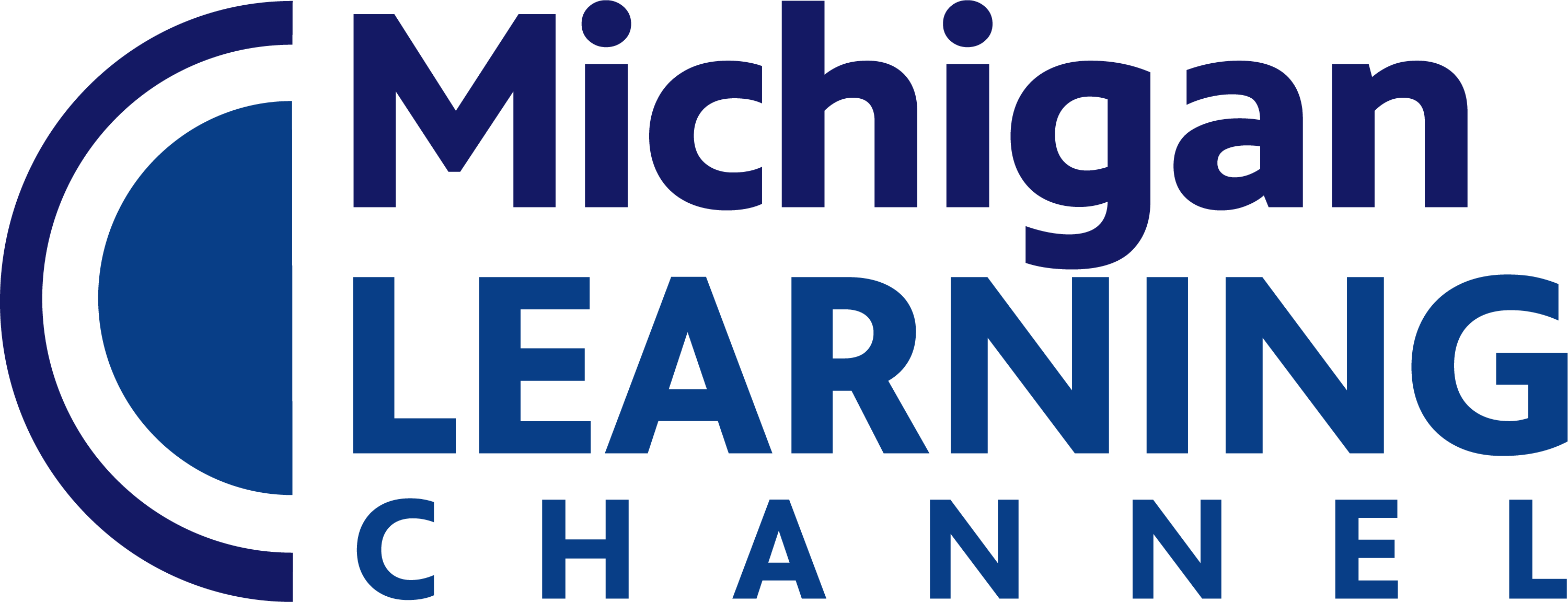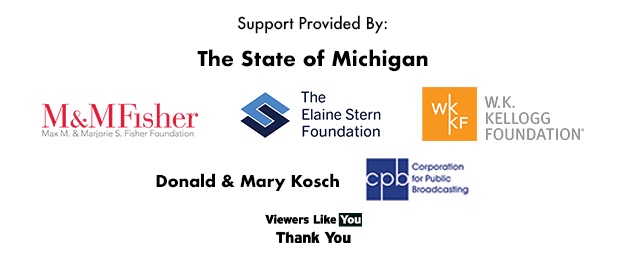Subjects
Shows
Using the Fourteenth Amendment, describe the impact of the doctrine of incorporation, due process of law, and equal protection of [...]
Identify and explain personal rights, political rights, and economic rights as well as how these rights might conflict.
Describe considerations, criteria, and examples that have been used to deny, limit, or extend protection of individual rights.
Identify and describe ways in which foreign policy is made including Constitutional powers of the executive, legislative, and judicial branches [...]
Analyze past and present examples of U.S. foreign policy, its implementation, and its impact on American and international institutions and [...]
Analyze the influence and impact of U.S. political, economic, technological, and cultural developments on countries and people around the world.
Analyze how international political, economic, technological, and cultural developments impact U.S. institutions and individuals.
Identify and evaluate the roles and responsibilities of the United States in international governmental organizations including bilateral and multilateral agreements.
Describe and evaluate the requirements and process for becoming a citizen of the United States.
Identify and analyze various Democratic Values of the United States as found in the Declaration of Independence.
Explain the impact of the major debates and compromises underlying the drafting and ratification of the American Constitution including the [...]
Analyze relationships between Democratic Values and Constitutional Principles.
Analyze how influential historical speeches, writings, cases, and laws express Democratic Values and influenced changes in American culture, law, and [...]
Use examples to investigate why people may agree on Democratic Values and Constitutional Principles in the abstract, yet disagree over [...]
Identify and describe the purposes, organization, powers, processes, and election of the legislative branch as enumerated in Article I of [...]
Identify and describe the purposes, organization, powers, processes, and election of the executive branch as enumerated in Article II of [...]
Identify and describe the purposes, organization, powers, processes, and appointment or election of the judicial branch as enumerated in Article [...]
Examine and evaluate the effectiveness the role of separation of powers and checks and balances in regard to the distribution [...]
Analyze the various levels and responsibilities in the federal and state judicial systems and explain the relationships among them.
Evaluate major sources of revenue and major expenditures of the federal government.
Identify and explain how Supreme Court decisions and provisions in the U.S. Constitution have impacted the power of the federal [...]
Describe limits the U.S. Constitution places on powers of the states and on the federal government’s power over the states.
Explain interactions and tensions among federal, state, and local governments using the necessary and proper clause, the Commerce Clause, and [...]
Describe how state, local, and tribal governments are organized, their major responsibilities, and how they affect the lives of people [...]
Analyze sovereignty of tribal governments in interactions with U.S. governments, including treaty formation, implementation, and enforcement between federal, state, and local [...]
Evaluate the major sources of revenue and expenditures for state, local, and tribal governments.
Describe and evaluate referendums, initiatives, and recall as mechanisms used to influence state and local government. Use a case study [...]
Describe the evolution of political parties and their contemporary influence on public policy.
Evaluate the historical impact of the Progressive Era with regard to governmental and industrial reforms.
Women’s Suffrage – Analyze the successes and failures of efforts to expand women's rights, including the work of important leaders [...]
United States and the Course of World War II – evaluate the role of the United States in fighting the [...]
Responses to Genocide – investigate the responses to Hitler’s “Final Solution" policy by the Allies, the U.S. government, international organizations, [...]
End of the Cold War – describe the factors that led to the end of the Cold War.
Comparing Domestic Policies – focusing on causes, programs, and impacts, compare and contrast President Franklin Roosevelt’s New Deal initiatives, President [...]
Domestic Conflicts and Tensions – analyze and evaluate the competing perspectives and controversies among Americans generated by U.S. Supreme Court [...]
Ideals of the Civil Rights Movement – compare and contrast the ideas in Martin Luther King’s March on Washington speech [...]
Women’s Rights – analyze the causes, course, and reaction to the women’s rights movement in the 1960s and 1970s.
Civil Rights Expanded – evaluate the major accomplishments and setbacks in securing civil rights and liberties for all Americans over [...]
Tensions and Reactions to Poverty and Civil Rights – analyze the causes and consequences of the civil unrest that occurred [...]
Economic Changes – using the changing nature of the American automobile industry as a case study, evaluate changes in the [...]
United States in the Post-Cold War World – explain the role of the United States as a superpower in the [...]
9/11 and Responses to Terrorism – analyze how the attacks on 9/11 and the response to terrorism have altered American [...]
Make a persuasive argument on a public policy issue, and justify the position with evidence from historical antecedents and precedents, [...]
Describe, compare, and contrast political philosophers views on purposes of government(s) including but not limited to Aristotle, Locke, Hobbes, Montesquieu, [...]
Identify, provide examples of, and distinguish among different systems of government by analyzing similarities and differences in sovereignty, power, legitimacy, [...]
Compare, contrast, and evaluate models of representation in democratic governments including presidential and parliamentary systems.
Compare and contrast federal, confederal, and unitary systems of government by analyzing similarities and differences in sovereignty and distribution of [...]
Subjects
Shows
Using the Fourteenth Amendment, describe the impact of the doctrine of incorporation, due process of law, and equal protection of [...]
Identify and explain personal rights, political rights, and economic rights as well as how these rights might conflict.
Describe considerations, criteria, and examples that have been used to deny, limit, or extend protection of individual rights.
Identify and describe ways in which foreign policy is made including Constitutional powers of the executive, legislative, and judicial branches [...]
Analyze past and present examples of U.S. foreign policy, its implementation, and its impact on American and international institutions and [...]
Analyze the influence and impact of U.S. political, economic, technological, and cultural developments on countries and people around the world.
Analyze how international political, economic, technological, and cultural developments impact U.S. institutions and individuals.
Identify and evaluate the roles and responsibilities of the United States in international governmental organizations including bilateral and multilateral agreements.
Describe and evaluate the requirements and process for becoming a citizen of the United States.
Identify and analyze various Democratic Values of the United States as found in the Declaration of Independence.
Explain the impact of the major debates and compromises underlying the drafting and ratification of the American Constitution including the [...]
Analyze relationships between Democratic Values and Constitutional Principles.
Analyze how influential historical speeches, writings, cases, and laws express Democratic Values and influenced changes in American culture, law, and [...]
Use examples to investigate why people may agree on Democratic Values and Constitutional Principles in the abstract, yet disagree over [...]
Identify and describe the purposes, organization, powers, processes, and election of the legislative branch as enumerated in Article I of [...]
Identify and describe the purposes, organization, powers, processes, and election of the executive branch as enumerated in Article II of [...]
Identify and describe the purposes, organization, powers, processes, and appointment or election of the judicial branch as enumerated in Article [...]
Examine and evaluate the effectiveness the role of separation of powers and checks and balances in regard to the distribution [...]
Analyze the various levels and responsibilities in the federal and state judicial systems and explain the relationships among them.
Evaluate major sources of revenue and major expenditures of the federal government.
Identify and explain how Supreme Court decisions and provisions in the U.S. Constitution have impacted the power of the federal [...]
Describe limits the U.S. Constitution places on powers of the states and on the federal government’s power over the states.
Explain interactions and tensions among federal, state, and local governments using the necessary and proper clause, the Commerce Clause, and [...]
Describe how state, local, and tribal governments are organized, their major responsibilities, and how they affect the lives of people [...]
Analyze sovereignty of tribal governments in interactions with U.S. governments, including treaty formation, implementation, and enforcement between federal, state, and local [...]
Evaluate the major sources of revenue and expenditures for state, local, and tribal governments.
Describe and evaluate referendums, initiatives, and recall as mechanisms used to influence state and local government. Use a case study [...]
Describe the evolution of political parties and their contemporary influence on public policy.
Evaluate the historical impact of the Progressive Era with regard to governmental and industrial reforms.
Women’s Suffrage – Analyze the successes and failures of efforts to expand women's rights, including the work of important leaders [...]
United States and the Course of World War II – evaluate the role of the United States in fighting the [...]
Responses to Genocide – investigate the responses to Hitler’s “Final Solution" policy by the Allies, the U.S. government, international organizations, [...]
End of the Cold War – describe the factors that led to the end of the Cold War.
Comparing Domestic Policies – focusing on causes, programs, and impacts, compare and contrast President Franklin Roosevelt’s New Deal initiatives, President [...]
Domestic Conflicts and Tensions – analyze and evaluate the competing perspectives and controversies among Americans generated by U.S. Supreme Court [...]
Ideals of the Civil Rights Movement – compare and contrast the ideas in Martin Luther King’s March on Washington speech [...]
Women’s Rights – analyze the causes, course, and reaction to the women’s rights movement in the 1960s and 1970s.
Civil Rights Expanded – evaluate the major accomplishments and setbacks in securing civil rights and liberties for all Americans over [...]
Tensions and Reactions to Poverty and Civil Rights – analyze the causes and consequences of the civil unrest that occurred [...]
Economic Changes – using the changing nature of the American automobile industry as a case study, evaluate changes in the [...]
United States in the Post-Cold War World – explain the role of the United States as a superpower in the [...]
9/11 and Responses to Terrorism – analyze how the attacks on 9/11 and the response to terrorism have altered American [...]
Make a persuasive argument on a public policy issue, and justify the position with evidence from historical antecedents and precedents, [...]
Describe, compare, and contrast political philosophers views on purposes of government(s) including but not limited to Aristotle, Locke, Hobbes, Montesquieu, [...]
Identify, provide examples of, and distinguish among different systems of government by analyzing similarities and differences in sovereignty, power, legitimacy, [...]
Compare, contrast, and evaluate models of representation in democratic governments including presidential and parliamentary systems.
Compare and contrast federal, confederal, and unitary systems of government by analyzing similarities and differences in sovereignty and distribution of [...]


